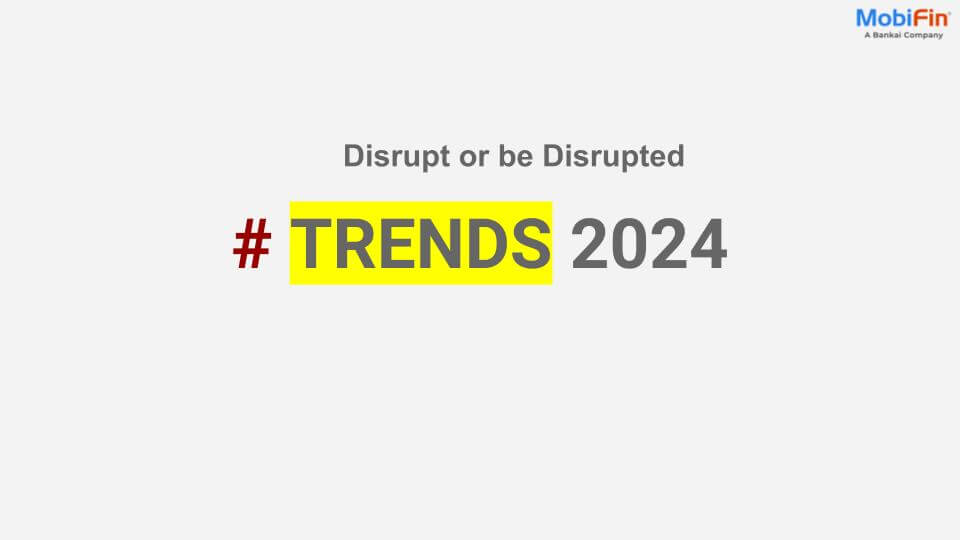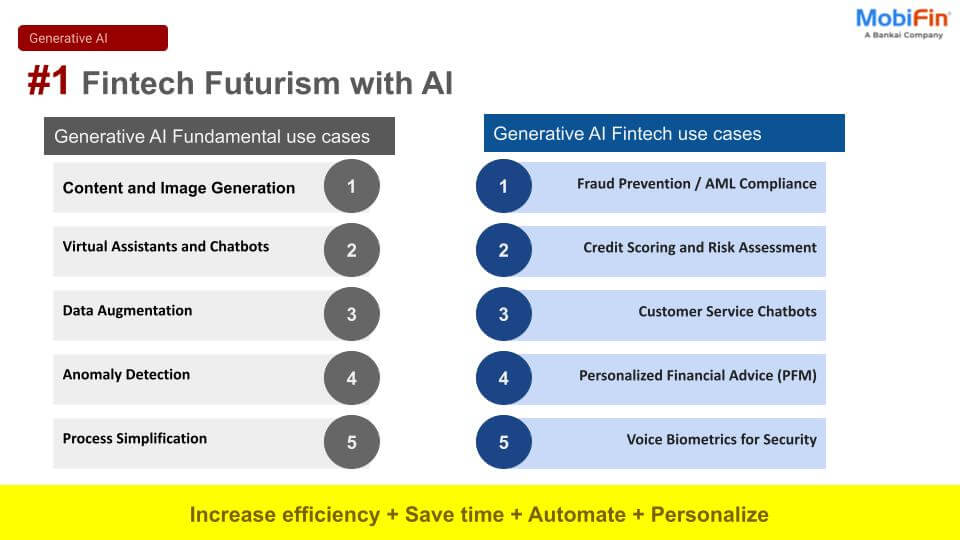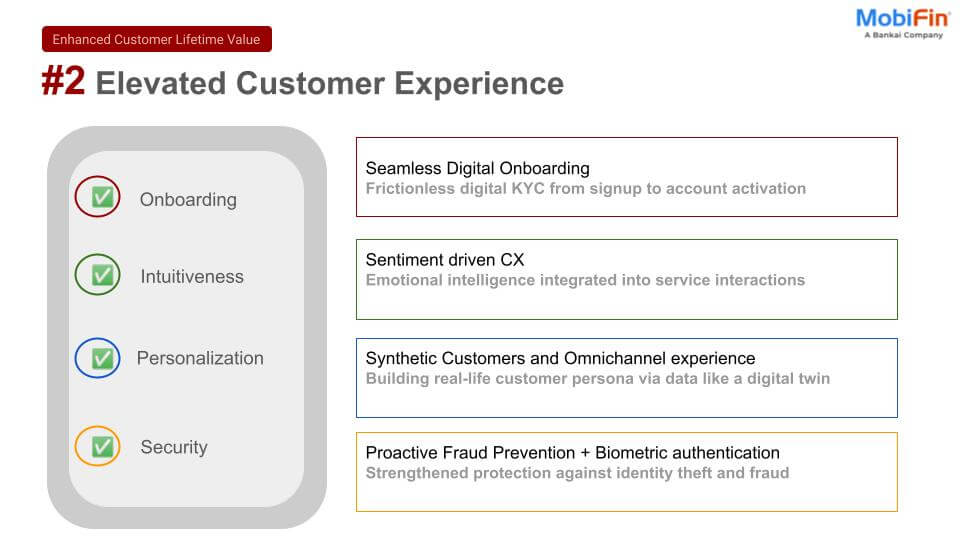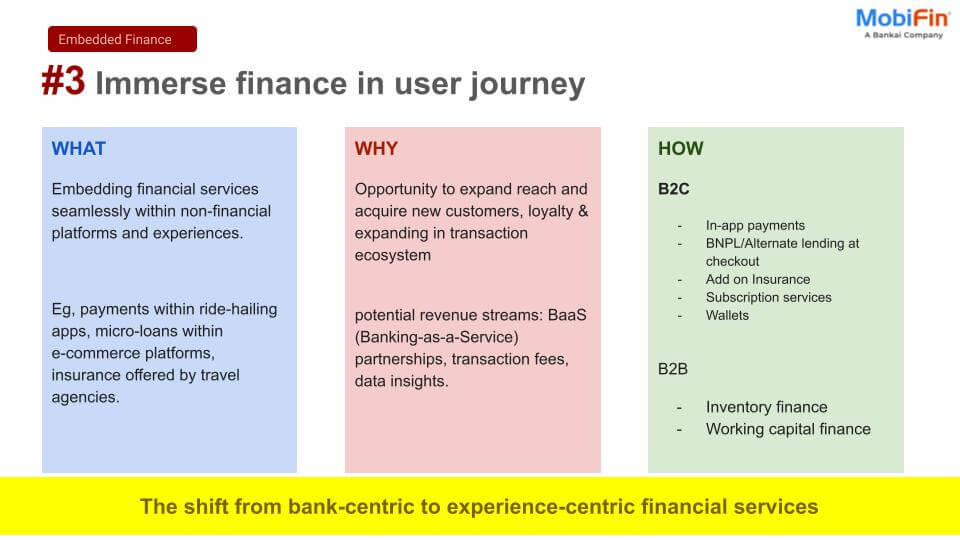The growing demand for instant, embedded credit is reshaping how loan management systems are evolving. This changing trend can be attributed to the surge in digital-native consumers and the evolution of platform economies. Customers no longer want to deal with paperwork, branches, or calls to access funds. Whether it’s a ride-share driver needing a mid-week fuel advance, or a customer shopping online for electronics, lending now needs to happen instantly, within the platforms people already use.
Traditional loan distribution models cannot keep up as they rely on monolithic systems, physical branches, and rigid approval pipelines. So, it renders them unsuitable for integration with fast-paced digital ecosystems.
Loan API marketplaces are a game-changer. They transform lending workflows into secure APIs, letting third-party platforms (e.g., wallets, e-commerce, HRM tools) embed credit effortlessly. This shifts lending into a real-time, user-centric service, seamlessly embedded across digital experiences.
Through our article, we shall explore how API-driven loan marketplaces are reshaping the embedded finance economy by enabling plug-and-play credit infrastructure.
What is a Loan API Marketplace?
A loan API marketplace is a technology layer where banks, MFIs, fintechs, and credit providers expose their lending workflows as APIs. These APIs are consumed by online platforms which embed them into customer touchpoints.
Examples
A user shopping on an e-commerce platform selects an item worth $300. At checkout, a real-time BNPL loan offer appears, pulled from a partner lender via API. With a few taps, the user accepts the offer and the loan is disbursed—without leaving the app. Similarly, in a healthcare app, a patient receives an instant medical loan approval based on their insurance history and wallet activity—again, powered by API integration with an external lender.
Benefits of Loan API Marketplaces
As embedded finance scales globally, loan API marketplaces are not optional anymore but foundational. Let’s talk about how they unlock a symbiotic model for lenders, borrowers, and digital platforms alike.
For Lenders
Loan API marketplaces allow lenders to get access to pre-verified customer bases and tap users already active on partner platforms. It is also possible to leverage behavioral data based on wallet activity, gig earnings, or purchase history.
For Borrowers
Borrowers get the privilege of real-time, embedded loan offers. It eliminates the need to fill up exhaustive forms and switch between different apps. With the help of loan API marketplaces, they can get tailored offers with clear terms based on actual behavior.
For Platforms
Loan API marketplaces convert customer’s trust and engagement into financial value. Embedded credit also boosts customer retention and lifetime value. It promotes financial inclusion by serving underserved users with context-based microloans, even without bureau histories.
Key Players
The key players in this model are (a) lenders who supply credit products and pricing models, often with tiered risk thresholds, (b) platforms to serve as demand aggregators and embed loan journeys natively to extend credit to their user base, and (c) orchestrators to enable API harmonization, scoring, KYC, and compliance routing across diverse lenders.
Generally, the core APIs offered spread across four phases: 1) Pre-qualification and risk profiling, 2) loan application process, 3) disbursement and lifecycle tracking, and 4) servicing.
As more platforms and lenders plug into this API-first model, the network effect strengthens: increased transaction volume sharpens scoring models, broadens credit access, and fuels innovation in credit products. Each new integration adds value to all others, making the system smarter, faster, and more inclusive over time.
Key Technology Enablers
Delivering real-time credit requires more than APIs: it demands a full-stack, secure, modular infrastructure. Open API standards, using RESTful architecture and protocols like OAuth 2.0 or mutual TLS, ensure integration ease and data protection, while ISO 20022 enables consistent messaging.
Smart API gateways route loan requests based on credit policy, user profile, and real-time lender capacity. AI-powered scoring engines now assess non-traditional data—gig earnings, utility payments, P2P transfers—requiring transparency and bias controls to ensure fairness.
Compliance is embedded via governance modules handling digital KYC/KYB, biometric checks, AML/sanctions screening, and GDPR-compliant consent orchestration—all with full audit trails.
Finally, embedded UI SDKs help platforms offer branded loan experiences—onboarding to disbursal—without building from scratch. Together, these components power robust loan API marketplaces, enabling fast, secure, and inclusive credit delivery within everyday digital experiences.
Challenges to Address
A major hurdle for API-driven lending is the lack of standardization. Fragmented API formats across institutions make integrations time-consuming and costly, slowing down ecosystem expansion. Closely linked to this is credit policy friction: each lender operates with distinct underwriting rules and data requirements, complicating harmonization across platforms.
Data privacy and consent enforcement also remain critical. Platforms must ensure that user data is handled transparently, with explicit consent mechanisms that align with evolving regulatory expectations. Alongside this, fraud risk is a growing concern in high-volume API environments. Platforms need to guard against threats like synthetic identities and bot-based attacks that can exploit system vulnerabilities.
Finally, maintaining liquidity balance is essential. Lenders must continuously monitor and adjust their exposure and treasury flows, especially within high-velocity digital marketplaces where transaction volumes can fluctuate rapidly.
Strengthening Loan API Ecosystems for Best Utilization
As API-powered lending matures, the focus must shift from experimentation to infrastructure-level resilience. That means building ecosystems that are not only fast and modular, but also interoperable, regulated, and intelligent by design. Here’s how the ecosystem is evolving across innovation, infrastructure, and policy dimensions:
1. Innovation Trends: CBDCs and Programmable Money
The rise of Central Bank Digital Currencies (CBDCs) and programmable money will transform how credit is issued, disbursed, and managed. Programmable loans can be tied to specific triggers, like releasing agricultural credit only after weather verification, or disbursing gig worker loans in sync with verified delivery completions. CBDC-backed APIs could also bring real-time disbursement with zero settlement latency, especially in government-backed lending schemes. These innovations will allow lenders to build high-trust credit products with embedded safeguards, improving efficiency and accountability.
2. Infrastructure Evolution: Algorithmic Routing and Credit-as-a-Service
Modern loan API marketplaces are evolving into multi-lender ecosystems where borrower requests are routed in real time to the most relevant lender, based on credit policy, pricing, availability, or risk thresholds.
At the same time, Credit-as-a-Service (CaaS) platforms are lowering the barrier for any digital platform to offer credit. These platforms provide pre-built modules for origination, KYC, scoring, disbursal, and lifecycle management. Emerging players in this space include Synapse and CredAble. While Synapse is an API-based infrastructure platform enabling banking and lending services in the U.S., CredAble specializes in embedded working capital financing in Southeast Asia and India.
These CaaS providers are accelerating time to market and enabling contextual lending across industries, from retail to logistics to education.
3. Regulatory Directions: Open Lending Protocols and Data Standards
To ensure scale, fairness, and sustainability, loan API ecosystems require coordinated regulatory support. Financial regulators and central banks are increasingly pushing toward open lending protocols, standardized APIs, consent-driven data sharing models, and explainable credit scoring frameworks.
One significant area of focus is wallet and ID interoperability. For example, in Africa, mobile wallet APIs are becoming central to embedded credit, with telcos and lenders collaborating to offer microloans based on airtime top-ups and utility payments.
Global development agencies and fintech alliances are also working on common credit scoring standards and ethical data use principles. The joint objective is to avoid exclusion, promote transparency, and enforce accountability.
Wrapping Up
Lending has evolved from being a destination to becoming a seamless layer within digital ecosystems. The institutions that thrive will be those who embrace APIs not just as tech, but as the blueprint for financial distribution. Platforms like MobiFin help fintechs and lenders scale faster by offering composable APIs that cover origination, scoring, and lifecycle orchestration.
They empower lenders to scale faster, platforms to deepen user value, and consumers to access funds instantly and fairly, without any friction.
In the embedded finance economy, the most powerful lenders won’t be the ones with the most branches, they’ll be the ones with the best APIs.
So, if you are looking to embed seamless loan management systems into your platform, MobiFin would be the perfect partner to help you scale.
Connect with us now to book a demo.













